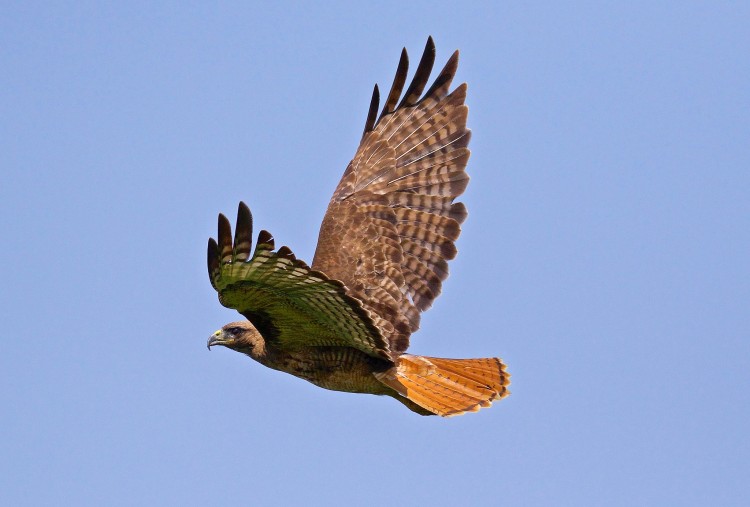
There’s an extraordinary event taking place on social media right now: Black Birders Week.
Organized by #BlackAFinSTEM – a coalition of students and professionals in the fields of science, technology, engineering, and mathematics – Black Birders Week is showcasing the achievements, personalities, and passions of Black nature enthusiasts.

Importantly, Black Birders Week is also highlighting the fact that Black people should be able to enjoy the outdoors as readily as anyone else – without having to worry about being harassed or seen as ‘out of place.’ Another crucial point is that (especially White) academics, scientists, and conservationists need to do better jobs of diversifying their fields and creating inclusive cultures.
As this article by CNN’s AJ Willingham illustrates, diversity is the key to resilience: ecologically, genetically, professionally, and culturally.
For instance, when individuals with a wide array of lived experiences make up your workforce – and when all of those individuals have equal grounds on which to express themselves and be heard – then you’re better able to respond to challenges. In no field is this more important than conservation, where our problems are enormous and “wicked” (they don’t have easy solutions).
Despite the need for diversity in conservation, there are many barriers that make it harder for Black people to enter into and succeed in conservation careers.
One of those barriers is the lack of Black role models. Willingham’s article discusses this shortage of role models, or representation, at length. Essentially, when a field is full of people who don’t look like you or whom you can’t relate to, it’s not encouraging. As an example:
Black Birders Week is helping to provide the representation that Black nature enthusiasts need. This tweet from Jason Ward sums it up:
Black Birders Week is also countering the stereotype that Black people “aren’t interested in” or “don’t care about” nature – among others. Here’s a bizarre stereotype that Tamar Evangelestia-Dougherty encountered, and how she overcame it:
There’s far more to discuss about Black Birders Week, the histories that have produced conservation’s lack of diversity, and more. If you want to educate yourself about these issues, the CNN article is a good place to start.
In addition, I found Dr. Carolyn Finney’s Black Faces, White Spaces to be immensely helpful, and I recommend it to you as well.
But, most of all, please spend some time browsing #BlackBirdersWeek on Twitter; nothing beats reading about the lived experiences of real people, as told by them.
Sickens me that black people can’t even enjoy nature in peace. This is a great post!
LikeLiked by 2 people
It truly is sick, Shay. Nature is for everybody, and that’s one of the reasons I’m glad that #BlackBirdersWeek is happening and garnering attention from major news outlets like CNN.
It’s great to hear from you, by-the-way! How’ve you been?
LikeLiked by 2 people
Yeahh I’m glad too!
I’ve been good – thought this was a good time to come back to WordPress! How have you been?
LikeLiked by 2 people
This is a perfect time to come back to WordPress: we might be living through a turning point in global history.
Ha, I’ve been all over the place emotionally. I don’t want to go into too much detail here though, because I don’t want this post to be about me.
LikeLiked by 2 people
Yeahh we really are!
And yeah I understand. If you want to talk about it you can always email me
LikeLiked by 1 person
Yesterday we had a hawk, don’t know what kind for sure except that red tail hawks frequent our area, sit on our fence for awhile only a few feet from us. I talked to him for awhile before he nonchalantly lifted off again. We were surprised he stayed as long as he did. It was pretty neat.
LikeLiked by 2 people
I’ve seen some pretty tame red-tails: they seem to get used to people relatively quickly. I’ve even watched videos of red-tails building rests on raising chicks on skyscrapers!
LikeLiked by 2 people
We have a neighbor with palm trees he never trims and they look so shabby, but birds build nests in there and hawks come around because of them. It’s a hoot to see the birds gang up on them. I’m surprised they ever get to eat. One little bird can sound an alarm that birds from everywhere show up for. And not just one specie, but wrens, orioles, mockingbirds, black birds and they all join forces. Now that we don’t have our kitty, we’ve thought to put out feeders.
LikeLiked by 2 people
Dear Josh Gross and joliesattic,
Thank you for conversing about my avian colleague, the Red-Tailed Hawk.
Yours sincerely,
SoundEagle🦅
LikeLiked by 2 people
No problem!
LikeLiked by 1 person
Love this and any other movement to widen access to the outdoors for all of us; we take so much for granted! Thank you for sharing.
LikeLiked by 2 people
No problem!
LikeLike